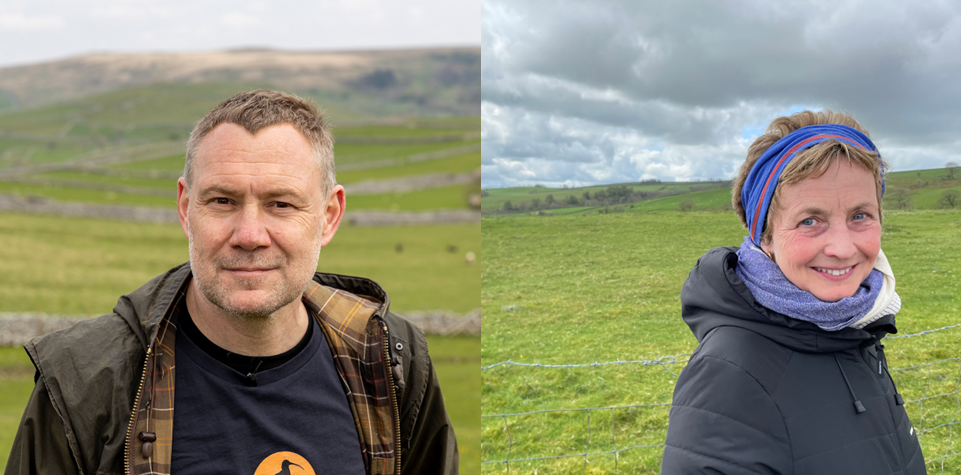


Gathering festival is less than 2 months away and we are starting to get extremely excited!
For this guest blog we are lucky to hear from two of our Gathering speakers: internationally-acclaimed singer/songwriter David Gray and award-winning author, producer and campaigner for nature Mary Colwell. David and Mary will be in conversation at Gathering on Saving’s Britain’s Curlews.
It is brilliant to hear from and David and Mary at this time because the first batch of juvenile Curlew were headstarted at Wild Ken Hill and Sandringham on Wednesday 20th July. This release builds upon the 2 successful releases in 2021.
Sadly we couldn’t give the Wednesday release our full attention as we were still attending to the smouldering remains of the fire that took place on Tuesday 19th July. The release was, however, a lovely, hopeful thing and a reminder of all the good work going on at Wild Ken Hill despite the fire.
Over to Mary and David to hear why the Curlew is so important to them!
I have been avidly fascinated by the natural world ever since I was a small child. That connection has only deepened over time, firstly, and very significantly, through my childhood spent in Pembrokeshire, West Wales, and more latterly through my time spent up on the North Norfolk Coast, where I’ve been a regular visitor for the last 20 years.
Being out in wild landscapes and encountering the plants and the wild creatures that live within them is like a balm for the soul. When nature starts to work its magic, it rapidly dissolves the constraints of the purely human world and returns me to a place where, as my senses quicken, my heart slows down and begins to beat in time with all the ancient and interconnected rhythms of tide and season. The straight line is replaced by the circle. This sense of rightness and replenishment feeds back into my creative work in a thousand different ways.
In recent years I have begun to get more actively involved in efforts to protect and restore the natural world. I have done this in some obvious ways, by trying to use my profile to not only raise money but to also raise awareness, but one of the most difficult though vital aspects of all ongoing conservation efforts is to try and re-engage the public imagination. I think that artists and creative thinkers of all types will have a crucial role to play if we are to bridge the profound imaginative gap that currently exists between people and the miraculous yet fragile world which they inhabit. Should we fail to do so, then I fear that a great deal of what we currently cherish, might be lost.
For several reasons I have chosen to highlight the plight of the curlew in particular. First and foremost, it’s a truly unforgettable bird that has delighted and captivated me throughout my life from the very first moment that I saw and identified one aged just 3. When the curlew opens its great curved bill to sing, it seems that we are listening to the very spirit of the wild land itself. I find it unthinkable that something as magical and irreplaceable as this could be lost within my lifetime, and as soon as I read Mary’s book ‘Curlew Moon’ and realised the true extent of the problems that the curlew faces, I have been doing my utmost to try and help secure its future. To my mind at least, if we can safeguard the future of the curlew, we will have gone some way to safeguarding the future of the wild itself.
I will be discussing all of this and more in conversation with Mary on September 17th, I will also be playing several songs to better illustrate some of the many ways in which nature informs, inspires and shapes my work.
Curlews, for me, are the voice of Britain’s wild, wet, flowery, boggy and muddy places. Their presence lights up a landscape, people stop and listen to their bubbling call in spring and their curleee call in winter, transfixed by an evocative and beautiful sound. They are sculptural birds, rounded and elongated with that wonderful, long downward curving bill. But they represent so much more. Curlews are what good looks like. If Curlews are nesting safely, then so too are other ground nesting birds like Lapwings, Oystercatchers and Skylarks. Curlews also represent insect and flower-rich meadows and peatland, the invertebrates in healthy, damp soils and in the mud of estuaries and wetlands. To care about Curlews is to care about a vibrant, diverse environment for wildlife.
Curlews are under threat from some of the greatest environmental challenges we face, unsustainable agriculture, insensitive afforestation, high numbers of predators like foxes and crows, pollution, climate change, development, and so on. Looking at Britain through curlew-eyes we can see dangers everywhere. Curlews help bring people from different backgrounds together to focus on the best solutions. They help us to work out how people and wildlife can live together.
These are the big themes and issues David Gray and I will be discussing in our evening of conversation and music. We will talk about how best to raise awareness through campaigns, music and writing, how David uses his profile to help wildlife and how his life-long love of nature influences his music today. It will be a fascinating evening that looks at the natural world from different perspectives and seasoned with music from a renowned singer/songwriter.